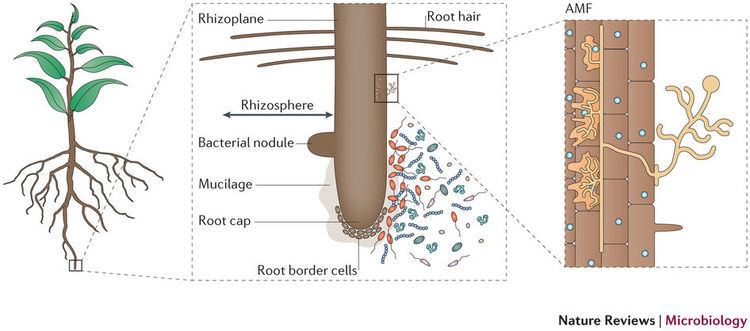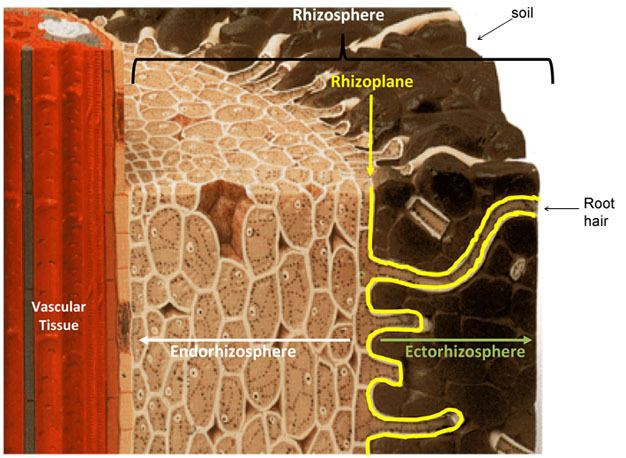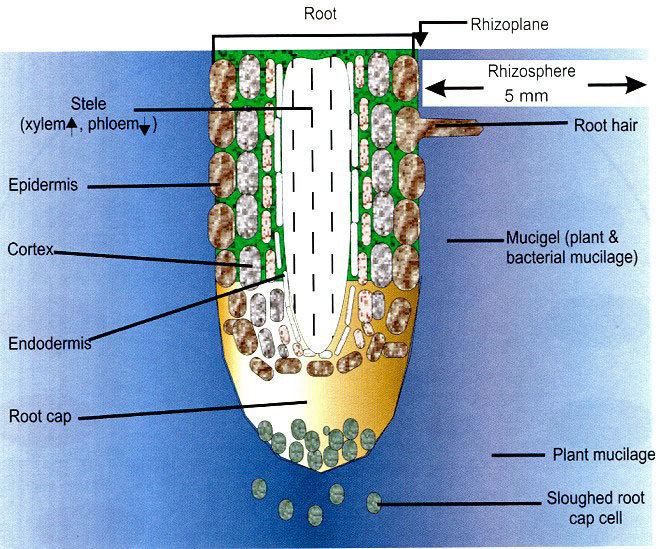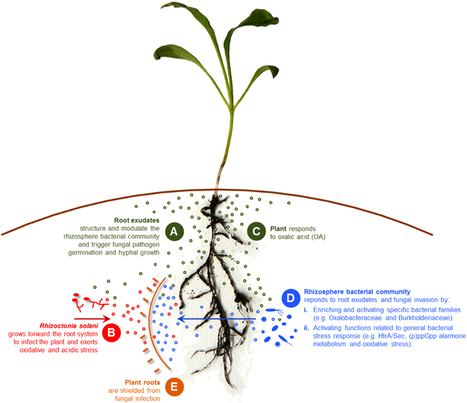 | ||
What is organics part 3 the rhizosphere root space
The rhizosphere is the narrow region of soil that is directly influenced by root secretions and associated soil microorganisms. Soil which is not part of the rhizosphere is known as bulk soil. The rhizosphere contains many bacteria that feed on sloughed-off plant cells, termed rhizodeposition, and the proteins and sugars released by roots. Protozoa and nematodes that graze on bacteria are also more abundant in the rhizosphere. Thus, much of the nutrient cycling and disease suppression needed by plants occurs immediately adjacent to roots.
Contents
- What is organics part 3 the rhizosphere root space
- Philip poole plant control of the rhizosphere microbiome
- Secretions
- Biological control
- References

Philip poole plant control of the rhizosphere microbiome
Secretions

Plants secrete many compounds through their roots to serve symbiotic functions in the rhizosphere. Strigolactones, secreted and detected by mycorrhizal fungi, stimulate the germination of spores and initiate changes in the mycorrhiza that allow it to colonize the root. The parasitic plant, Striga also detects the presence of strigolactones and will germinate when it detects them; they will then move into the root, feeding off the nutrients present. Symbiotic Nitrogen-fixing bacteria, such as Rhizobium species, detect compounds like flavonoids secreted by the roots of leguminous plants and then produce nod factors which signal to the plant that they are present and will lead to the formation of root nodules. In these nodules bacteria, sustained by nutrients from the plant, convert nitrogen gas to a form that can be used by the plant. Non-symbiotic (or "free-living") nitrogen-fixing bacteria may reside in the rhizosphere just outside the roots of certain plants (including many grasses), and similarly "fix" nitrogen gas in the nutrient-rich plant rhizosphere. Even though these organisms are thought to be only loosely associated with plants they inhabit, they may respond very strongly to the status of the plants. For example, nitrogen-fixing bacteria in the rhizosphere of the rice plant exhibit diurnal cycles that mimic plant behavior, and tend to supply more fixed nitrogen during growth stages when the plant exhibits a high demand for nitrogen.

Although it goes beyond the rhizosphere area, it is to note that some plants secrete allelochemicals from their roots which inhibit the growth of other organisms. For example, garlic mustard produces a chemical which is believed to prevent mutualisms forming between the surrounding trees and mycorrhiza in mesic North American temperate forests where it is an invasive species.
Biological control

